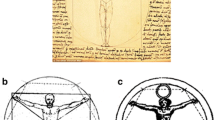Summary
Inquiries of Wellstein, Grünbaum and others have proved that there are indefinitely many different spatial models of Euklidian geometry. The points, lines and planes of these models are related to each other as the points, straight lines and planes of Euklidian geometry, but they are obviously totally different from them. That means that the axiomatic Euklidian geometry does not clearly determine the spatial forms of their planes and straight lines.
The constructive geometry basing on approaches of Hugo Dingler tries to solve this problem of disambiguity so that a clear realization of the geometrical basic objects plane, straight line and rectangle and others is possible because of certain rules. On the one hand these rules are to pledge the techniques of realisation and on the other hand they are the basic for the deduction of statements on the technically realized geometrical basic objects. The rules are especially to pledge the selection of apt material that keep its form.
The following will show that the disambiguity cannot be pledged by the mere laws established by the constructive geometry and especially that the problem of electing the material cannot be solved by these laws. Furthermore it proves to be necessary to analyze and reconstruct more circumstances describing the selection of apt material which exceed the present standard of constructive geometry.
Similar content being viewed by others
Literatur
R. Inhetveen, Konstruktive Geometrie, Mannheim — Wien — Zürich 1983.
P. Lorenzen, Das Begründungsproblem der Geometrie als Wissenschaft der räumlichen Ordnung, in: Philosohia Naturalis 4 (1961), S. 415ff.
J. Wellstein in: H. Weber und J. Wellstein, Enzyklopädie der Elementarthematik, Leipzig 1905, Bd. II, S. 34ff. und S. 52. A. Grünbaum, Geometrie, Zeitmessung und Empirismus in: Archiv für Philosophie, Bd. 12/3–4, 1963, S. 223ff.
P. Lorenzen, a.a.O., ferner: P. Lorenzen, Logische Propädeutik, Mannheim — Wien — Zürich 1967, S. 225ff.
P. Lorenzen, a.a.O. S. 230; eine ausführliche Diskussion bei A. Kamlah, Zwei Interpretationen der geometrischen Homogenitätsprinzipien in der Protophysik, in: G. Böhme (Hrsg.), Protophysik, Frankfurt 1976, S. 169ff. — K.-H. Katthage, Sind die Normen der Protophysik des Raumes eindeutig?, in: J. Pfarr (Hrsg.), Protophysik und Relativitätstheorie, Mannheim — Wien — Zürich 1981.
Zur Herstellung ebener Flächen s. unten die Ausführungen zum Dreiplattenverfahren. Eine ausführlicheren Darstellung dieses Verfahrens bei K.-H. Katthage, Die Herstellung ebener Flächen nach dem Dreiplattenverfahren, in: Technikgeschichte Bd. 49 (1982) Nr. 3, S. 208ff.
P. Janich, Zur Protophysik des Raumes, in: G. Böhme (Hrsg.), Protophysik, Frankfurt 1976, S. 96.
R. Inhetveen, a.a.O., S. 18.
P. Janich, a.a.O., S. 113ff.; R. Inhetveen, a.a.O., S. 25ff. K.-H. Katthage, Die Eindeutigkeit des Dreiplattenverfahrens, Dissertation Köln 1979, S. 47ff.
R. Inhetveen, a.a.O., S. 49; es heißt dort u. a.: „Daß es solche Verfahren gibt, ist nun methodisch ebenso wichtig, wie es faktisch trivial ist ... Es ist also festzuhalten, daß es solche Herstellungsverfahren gibt, daß zweitens ohne sie die Definitionen von Klappsymmetrie und freier Klappsymmetrie — und damit alles diesen Definitionen folgende — bloß fingierend wären, daß drittens die prototheoretischen Sätze eine Kontrolle der Produkte solcher Verfahren erlauben ...“.
R. Inhetveen, a.a.O., S. 28ff.
Vgl. Anm. (7), weitere Literatur in der dort angegebenen Arbeit.
K.-H. Katthage, Die Eindeutigkeit des Dreiplattenverfahrens, Dissertation Köln 1979, S. 32ff.
Vgl. z. B. P. Janich, H. Tetens, Protophysik, in: Philosophia Naturalis 22 (1985), S. 5f.
Vgl. hierzu z. B. Janich, Zur Kritik an der Protophysik, in: G. Böhme (Hrsg.), Protophysik, Frankfurt 1976, S. 311f. Janich geht hier auf das analoge Problem in der Chronometrie ausführlicher ein.
Katthage, a.a.O. S. 37–46; K.-H. Katthage, Sind die Normen der Protophysik des Raumes eindeutig? in: J. Pfarr (Hrsg.) Protophysik und Relativitätstheorie, Mannheim — Wien — Zürich, 1981, S. 69ff.
Katthage, a.a.O.
Inhetveen zeigt, daß die Forderung nach größeninvarianter Rede über geometrische Sachverhalte zur euklidischen Geometrie führt. Zuammenhänge zwischen Materialauswahl, starren Körpern und der Euklidizität der konstruktiven Geometrie sind bei Katthage aufgezeigt. — R. Inhetveen, Konstruktive Geometrie, Mannheim — Wien — Zürich, 1983. — K.-H. Katthage, Sind die Normen der Protophysik des Raumes eindeutig?, in: J. Pfarr (Hrsg.), Protophysik und Relativitätstheorie, Mannheim — Wien — Zürich, 1981.
P. Janich, Zur Protophysik des Raumes, in: G. Böhme (Hrsg.), Protophysik, Frankfurt 1976.
Author information
Authors and Affiliations
Rights and permissions
About this article
Cite this article
Katthage, KH. Die Eindeutigkeit der konstruktiven Geometrie. Zeitschrift für Allgemeine Wissenschaftstheorie 18, 285–295 (1987). https://doi.org/10.1007/BF01801090
Issue Date:
DOI: https://doi.org/10.1007/BF01801090




